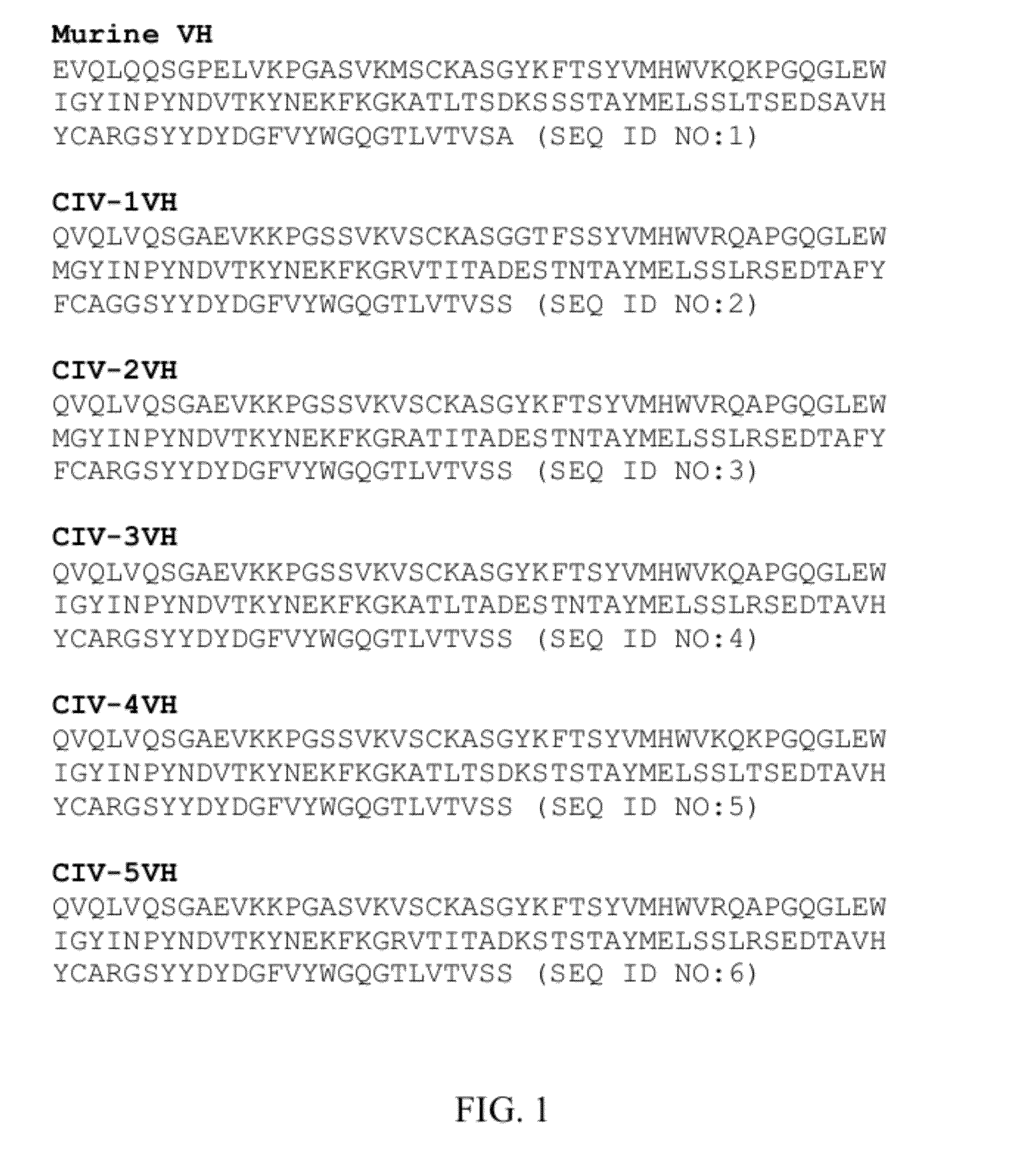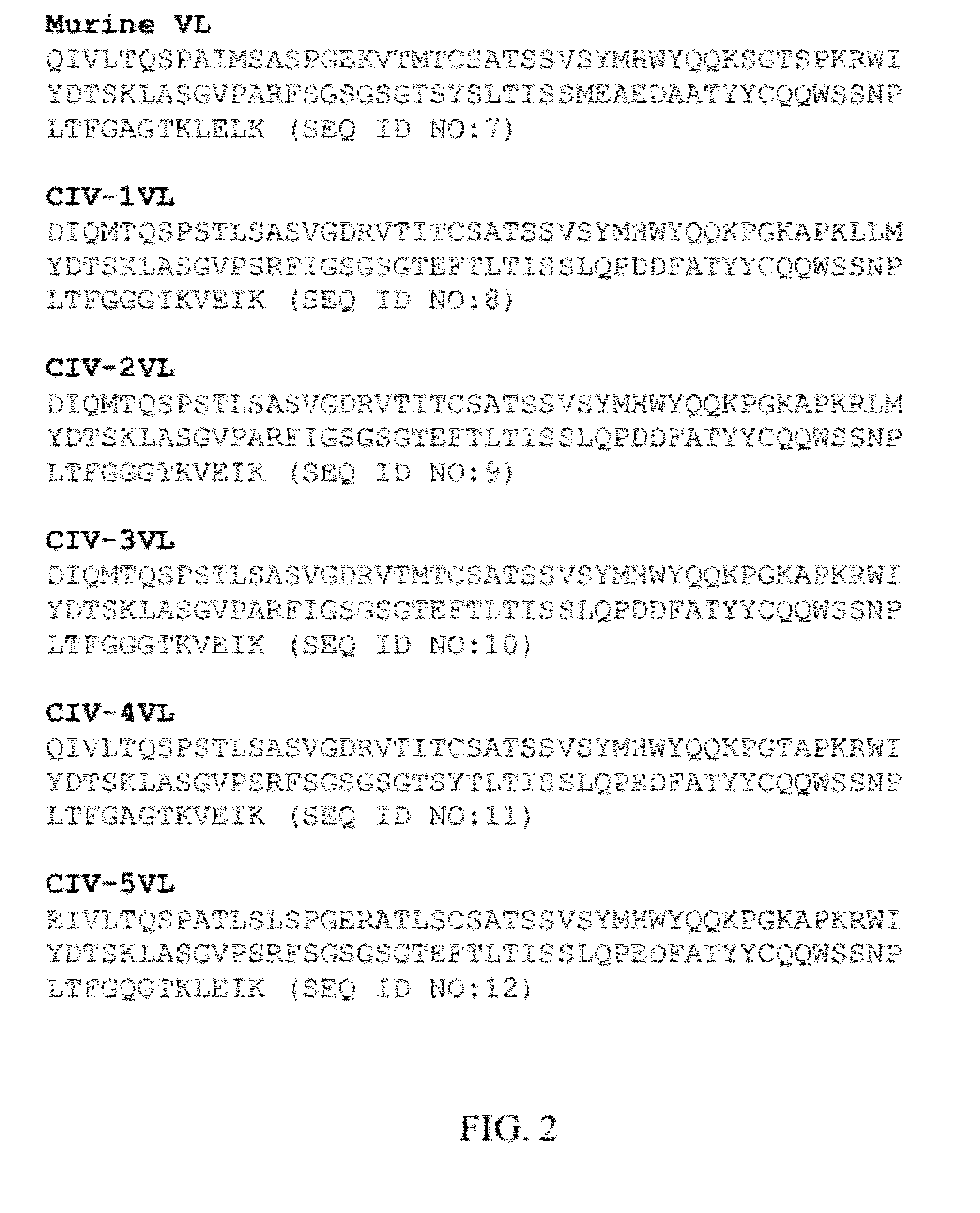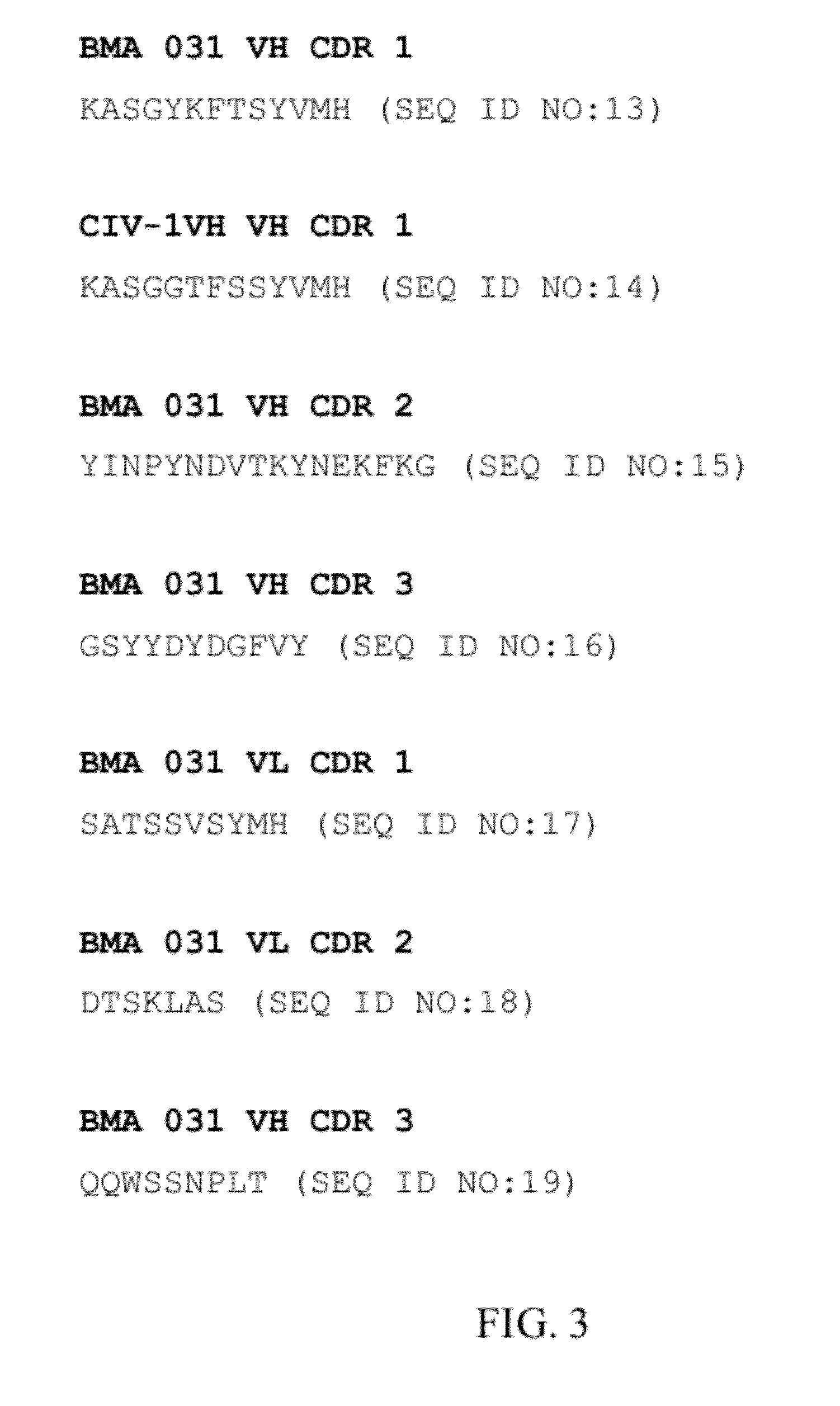T-Cell Receptor Antibodies And Methods of Use Thereof
a technology of t-cell receptor and antibody, which is applied in the field of t-cell receptor antibodies, can solve the problems of limited use of antibodies directed to these epitopes, the inability to achieve such pan-specific antibodies, and the remarkable heterogeneity of tcr, so as to prolong the survival of a subject diagnosed, improve the efficacy of standard or experimental treatment, and prevent the treatment or management of t-cell malignancies.
- Summary
- Abstract
- Description
- Claims
- Application Information
AI Technical Summary
Benefits of technology
Problems solved by technology
Method used
Image
Examples
Embodiment Construction
[0116]The present invention presents antibodies that immunospecifically bind to the T cell receptor (TCR), preferably to the extracellular constant domain of the TCR α chain. In other embodiments, the antibody of the invention binds the β, γ or δ chain of TCR and, in specific embodiments, binds the constant region of the extracellular domain of the β, γ, or β chain of the TCR. The antibody of the invention may immunospecifically bind the α, β, γ or δ chain of the TCR as part of an intact TCR complex, or may bind the α, β, γ or δ chain as an individual peptide or fragment thereof.
[0117]In preferred embodiments, the invention provides an antibody, or antigen binding fragment thereof, that specifically binds the constant region of the α chain of the TCR or otherwise specifically binds the α chain regardless of clonal origin of the T-cell; in such embodiments, the antibody of the invention recognizes TCR α chains, and, thus the α / β TCR, generally (i.e., is a pan-specific TCR antibody, a...
PUM
| Property | Measurement | Unit |
|---|---|---|
| Time | aaaaa | aaaaa |
| Time | aaaaa | aaaaa |
| Time | aaaaa | aaaaa |
Abstract
Description
Claims
Application Information
 Login to View More
Login to View More - R&D
- Intellectual Property
- Life Sciences
- Materials
- Tech Scout
- Unparalleled Data Quality
- Higher Quality Content
- 60% Fewer Hallucinations
Browse by: Latest US Patents, China's latest patents, Technical Efficacy Thesaurus, Application Domain, Technology Topic, Popular Technical Reports.
© 2025 PatSnap. All rights reserved.Legal|Privacy policy|Modern Slavery Act Transparency Statement|Sitemap|About US| Contact US: help@patsnap.com



